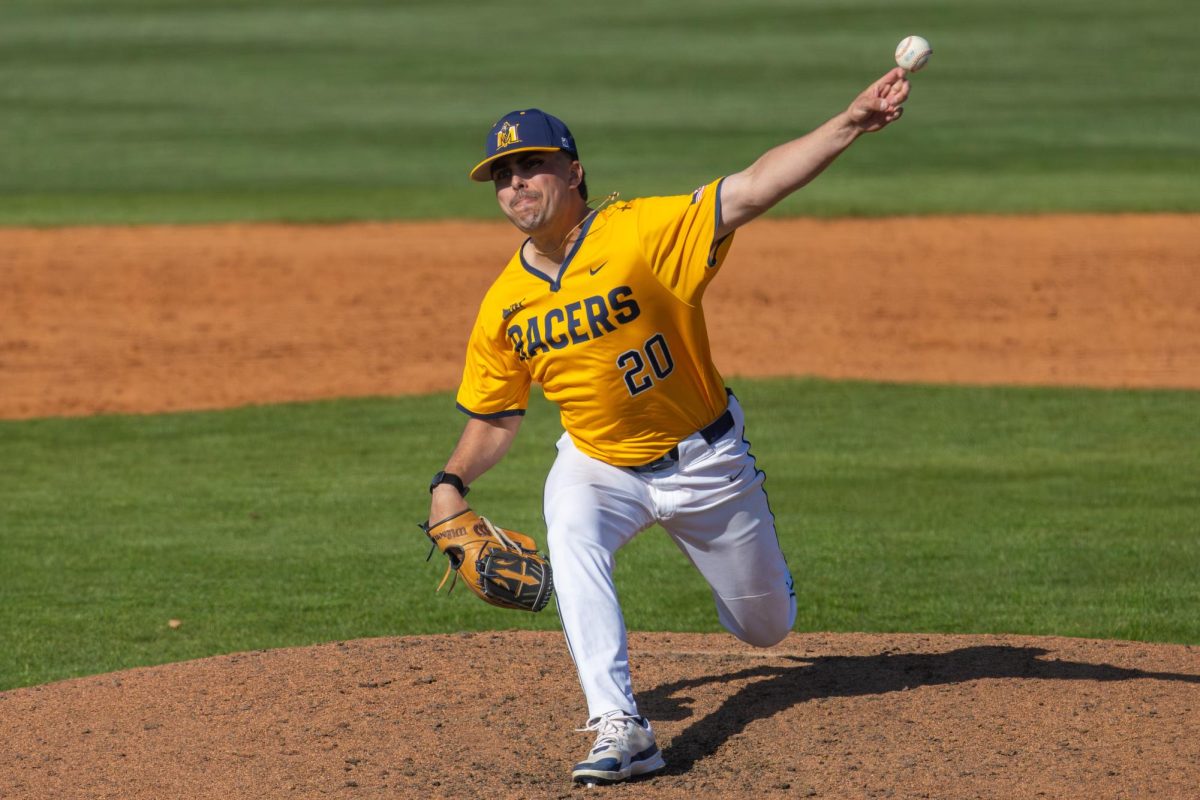
Students eat in the Thouroughbred Room, which was renovated during Winter Break.
Students arrived back from break to find modifications to the Thoroughbred Room, a new Pony Express route and the disappearance of sushi from Murray State’s campus.
Paula Amols, director of Dining Services and Racer Hospitality, said the main changes that happened over break are new lighting in the T-Room and improved serving stations.
“The whole place now looks bigger and brighter,” Amols said. “With the new station set up, the (T-Room) should run smoother.”
She said changes were made to help with the increased number of students.
Amols said there is an average of 200 more students eating in the T-Room each day, which is an 11 percent increase from last year. Nearly 1,400 students eat in the T-Room daily.
The T-Room also includes a revamped pasta and pizza station. The pasta station now offers whole wheat pasta as a healthier choice. The recipe for the pizza has changed, with dough made fresh daily, reformulated cheese and a new sauce.
The Pony Express will also now serve off-campus locations, including Campus Evolution Villages apartment complexes. On Tuesday nights from 6:30-8:30, the food truck will be at Campus Evolution Villages North, and on Wednesday nights from 6:30-8:30 it will be at Campus Evolution Villages South.
The Pony Express will also park at the Business Building from 5:15-6:15 on Tuesday and Wednesday nights.
While additional food has been added to menus, the absence of sushi on campus is another alteration students have seen this semester.
The University had a contract with Jasmine Thai Cuisine and Sushi Bar to provide sushi to several locations on campus. Amols said the contract was recently terminated after issues with providing the product on time.
Jasmine was given a 30-day notification to fix the problem, but failed to do so, Amols said.
Plans to bring sushi back to the University are in the planning stages and no date has been confirmed for when, or if, it will return.
Amols said renovations to the T-Room are completed for now, but the University is always looking for ways to improve conditions for students.
“Eating is generally seen as a gathering place to socialize and engage and to create community,” Amols said. “Students need a place to eat, and it is better to have it on campus so it is quicker and more convenient.”
Amols said that Dining Services’ main purpose is to serve the students.
Said Amols: “(Dining Services) tries to be very responsive to what the students want and need.”
Story by Rebecca Walter, Staff writer




























































































